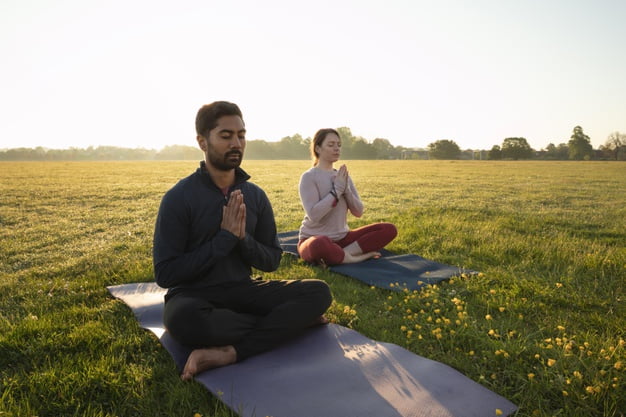Let's take a peek inside the world of the average child. Growing up isn't all ice-cream, rainbows and puppy dog kisses. There's lots of stress, confusion, fear and disappointment. Plus, virtually every aspect of their lives is regulated to some degree by adults - from the moment the alarm goes off to the moment they're sent to bed. Not surprisingly, kids frequently 'sleep-walk' through big chunks of their day as they fulfill other people's expectations.
Although there are many school of meditation, I'm going to over-simplify things a bit and divide this list into 4 (slightly overlapping) categories. All of them have their advantages. (I'm leaving out religious/spiritual meditations and 'trance states' brought about through chanting, twirling, etc).
Guided Meditation. This is kind of a hypnotic state (self-induced or led by another person). Guided meditation involves a quiet narrative, mental visualization and positive affirmations / suggestions.
Moving Meditation. Some examples of this are tai chi, yoga, swimming laps and even long solitary walks in nature. As breathing and motion synchronize, the mind opens and clears.
Focused Meditation. This deals with focusing on something outside of yourself: rhythmic music, a candle flame, or some object.
Mindfulness Meditation. Mindfulness means deliberate awareness in the present moment, free of judgement Gratitude meditation benefits.
For our purposes, I'm going to key in on Mindfulness Meditation.
But before launching into the instruction and application segments, please heed this warning: as an adult, teaching a kid, you better know what you're doing. Reading this article is an excellent start, but it will not make you an expert. Get some books. Take out a few instructional DVD's from the library. Maybe even find a qualified,experienced and professional instructor and take lessons. Remember, kids are like sponges - if you're involved in a personal development program, they'll sense your credibility. (And besides, with so much to gain, it pays to do it right). I strongly encourage you to participate with your kid; just giving instructions and holding a stop watch isn't nearly as effective.
Preparation
Children (and a lot of adults) have pre-conceived and incorrect ideas about meditation, so its worth while to take a few moments and set the record straight.
Only holy men meditate. Actually, meditation is for everyone. You don't need to be a guru or monk. People from all walks of life do it: champion athletes, top musicians, respected professors, successful business people, and home makers.
You can get psychic powers. Uh, no. It doesn't give you the ability to read minds, see the future, move objects with brainwaves or zip around the universe in an astral body. Sorry.
You've got to do weird stuff like sit in a lotus position and chant. In fact, you can meditate while kneeling or sitting in a chair. And while some people do chant, many others don't. And we aren't going to.
Another school of thought is to skip this step entirely. Don't make it such a big deal.
Introduction
Like a lot of things in life, this is as complicated as you want to make it. Keep in mind - you're teaching a child. Keep your expectations realistic. Your kid isn't going to sit still for half an hour. Two or three minutes is plenty to start with - and for some kids, even one minute is respectable. Keep your explanation simple brief. Tell them what they're going to do, how to do it, and for how long. And set a goal - tell them what they're trying to accomplish. Do NOT do a "brain dump" and overload them with a gazillion details. Provide a few points on posture, one or two things they might focus on, and the guidelines ("When you get into position, take a moment or two and get comfortable. Once we begin, you stay still."). And answer the big question. Why. One basic and elegantly clear answer goes like this:
"Most people don't realize this, but their mind is like a dog. Sometimes its lazy and doesn't want to do anything. Sometimes it gets all excited, and runs around. Dogs will chase birds, run around, bark at people, roll in the grass, run around, sniff some leaves, run around and make a mess. And most people spend their lives chasing after their thoughts like they'd chase after a crazy dog. What we're going to do now is like training that dog. So when you give your mind a command, it will obey."
The Nuts and Bolts
Environment- A quiet place where there wont be any interruptions or disturbances (turn the telephone off).
Position and Posture- Kneeling. (In the Japanese Zen tradition, this is called seiza). Tops of the feet and shins are flat on the floor, and buttocks rests on the heels. Back straight, head up. Hands can rest on the thighs or be folded in the lap.
Breathing. Through the nose. Slowly and rhythmically, from the lower abdomen- not the chest or shoulders.
Progressive Relaxation. Starting from the top of the head and working down, release any unnecessary tension.
Focus.
Some people count their breaths. In is 'one' out is 'two'. At 'ten', reverse the cycle and start counting backwards.
Some people visually focus on a point in space.
Some focus on nothing in particular, but try to keep their mind tranquil.

Comments
Post a Comment